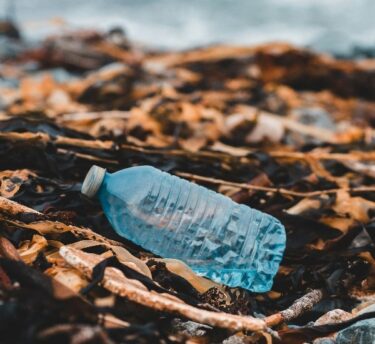Home – Regulations – PFAS Regulations
Table of Contents
Share this guide
‘Forever chemicals’ is the colloquial name given to the class of more than 12,000 synthetic chemicals more formally known as poly- and perfluoroalkyl substances (PFAS). These chemicals have been used in a wide range of products and industries.
These substances, colloquially known as forever chemicals, are known for their ability to resist heat, water, and stains, and which has made them popular in products such as non-stick cookware, food packaging, and firefighting foam. They are also used in other everyday products, like waterproof clothing, furniture and carpets, and personal care items. PFAS are used widely across industrial applications as well, commonly used as lubricants and functional coatings in key industries such as electronics and semiconductors and renewable energy.
Despite their useful properties, environmental concerns, such as persistence (with some forms taking more than 1000 years to degrade), and health risks associated with PFAS have spurred nations into action, resulting in a flurry of regulatory developments .

The European Union’s PFAS Restriction Proposal
On February 7, 2023, Denmark, Germany, Norway, Sweden, and the Netherlands jointly submitted the EU PFAS Restriction Proposal, aiming for a blanket ban on all PFAS chemicals. The proposal, defined by the European Chemicals Agency (ECHA), emphasises the persistent nature of PFAS and urges a reduction in environmental emissions. Contrary to some US state regulations that might target certain sectors or applications, this proposal aims to ban all PFAS chemicals in any application.
The development of the universal PFAS restriction proposal is still ongoing, with over 5,600 comments received by ECHA following its publication in 2023. The proposal would restrict approximately 10,000 chemicals in the EU; this is the broadest restriction proposal seen under REACH and hence has been met with strong reactions from industry. Following multiple delays, the restriction is expected to come into force as part of the upcoming REACH Revision, indicated to be published in Q4 2025.
In the meantime, various EU Member States, namely Denmark, France and the Netherlands, are imposing their own restrictions on PFAS.
- Expected to enter into force on July 1, 2025, Denmark plans to ban PFAS in clothing, shoes, and waterproofing agents intended for consumers, to be extended to further consumer products in 2027.
- France have adopted a ban on PFAS in wax products, cosmetics, consumer textiles, shoes and their waterproofing agents from 2026. From 2030 the ban will apply to all textiles except for protective clothing.
- In the Netherlands all PFAS have been placed on the national SVHC (substances of very high concern) list, ZZS, which requires companies to minimise their PFAS use and prevent their emissions.
The EU’s current approach to PFAS regulation includes restrictions via their inclusion in Annex XVII of EU REACH, or through global restrictions via their inclusion in the Stockholm Convention as persistent organic pollutants (POPs), implemented in EU Law by the EU POPs Regulation.
| EU Regulation | PFAS Substances in Scope |
|---|---|
| Annex XVII of EU REACH ((EU) 1907/2006) (Restriction) | C9-C14 PFCAs and their salts and related substances (including PFNA) |
| PFHxA and its salts and related substances | |
| EU POPs Regulation ((EU) 2019/1021) | PFOS |
| PFOA | |
| PFHxS |
Finally, a restriction proposal has been published for PFAS use in firefighting foams, underscoring the EU’s commitment to a precautionary approach. Adoption of the proposal is expected in Q2 2025.
Indirect EU regulation of PFAS
While PFAS are increasingly the subject of targeted restrictions, they are also regulated indirectly through broader EU legislation. The Industrial Emissions Directive (IED) plays a key role by limiting PFAS emissions into air, water, and soil from industrial facilities.
The Waste Framework Directive (WFD) governs the handling and disposal of PFAS-containing waste, helping to prevent environmental contamination.
In parallel, worker protection regulations aim to reduce occupational exposure to PFAS, particularly in sectors like chemical manufacturing and firefighting. Together, these frameworks form a critical part of the EU’s evolving regulatory response to PFAS, even in the absence of substance-specific bans.
PFAS in the UK: The UK’s Unique Approach to PFAS
As in the EU, PFAS substance restrictions under international conventions, the Stockholm Convention and Aarhus Protocol, are implemented in the UK via UK POP Regulations. Post-Brexit, however, the UK is diverging from the EU on their PFAS regulatory action, with UK REACH overseen by the Health and Safety Executive (HSE). The UK is contemplating a ban on select groups of PFAS, aligning restrictions with substances that pose the greatest health and environmental risks. Drinking water standards, disposal guidelines, and product-specific manufacturing restrictions are anticipated components.
PFAS is currently regulated in the UK under the following legislation:
- Under the Control of Substances Hazardous to Health Regulations 2002 (COSHH), certain PFAS (PFOA, PFDA, PFNA and PFOS, along with certain salts) must be kept to a level as low as reasonably practicable (ALARP) due to their carcinogenicity.
- Drinking Water Regulations require monitoring of PFAS concentrations in drinking water and set thresholds for remedial action. These regulations are fragmented across the UK; England and Wales have separate legislation to Scotland.
- General Product Safety Regulations 2005 (GPSR) require products to minimise health and safety risks, considering a product’s use.
- Environmental Permitting (England and Wales) Regulations do not yet specifically apply to PFAS, but control commercial activity which may cause pollution via chemical releases.
The UK Environment Agency has initiated a restriction on PFAS in firefighting foams. The HSE said it is aiming to complete related activities to the dossier in its 2024-25 work programme. Overall, the UK lags behind the EU in PFAS restriction following deregulation post-Brexit.
Indirect UK regulation of PFAS
Finally, the use of PFAS may also be regulated, albeit indirectly, under other generally applicable legal regimes such as those relating to:
- green claims (for example, where a failure to provide information on PFAS is found to be a misleading omission);
- consumer law (for example, in relation to the sale of a consumer product that potentially poses a risk from PFAS under the general prohibition against unfair commercial practices contained in the Consumer Protection from Unfair Trading Regulations 2008)
- fluorinated gases;
- plant protection products;
- biocides;
- veterinary medicines;
- human pharmaceuticals;
- waste;
- health and safety (for example, under the Health and Safety at Work etc. Act 1974 and the Control of Substances Hazardous to Health (COSHH) regime); and
- food contact materials, although there are currently no specific restrictions on PFAS in food or food contact materials in the UK.
PFAS in the US: The United States’ Varied Regulatory Landscape
In the U.S., PFAS regulation is evolving at federal and state levels, encompassing both water requirements and product focused bans and restrictions. At a federal level, under the Toxic Substances Control Act (TSCA) Section 8(a)(7), a one-time PFAS reporting rule was introduced for manufacturers and importers of PFAS and PFAS containing articles., Additionally, an increasing number of PFAS are included on the Toxic Release Inventory (TRI) and therefore subject to annual reporting under that program.
At a state level, high-profile lawsuits have heightened awareness, prompting states to pass comprehensive laws restricting unnecessary PFAS uses. States may follow different approaches to PFAS regulation, such as direct prohibition of specific products or groups of products containing PFAS as seen in California, or a phased approach with various timelines for compliance, typically based on consumer exposure to the product, like Minnesota, Maine, and Colorado. The concept of currently unavoidable uses is key to the narrative surrounding state PFAS regulations, with some states working to define this idea and others focused on products where there are already known alternatives, such as food packaging, textiles, and cosmetics. Beyond product regulation, the EPA has proposed regulations, including enforceable limits in drinking water, aligning with ongoing state-level efforts.
PFAS Risks, Exposure, and Impacts
PFAS, known for their resistance to heat, water, and stains, have found their way into various products, including non-stick cookware, food packaging, and firefighting foam. Alarming studies reveal PFAS in the blood of 97% of Americans, emphasising the ubiquitous exposure. The health impacts range from immune disorders to potential links with cancer, making regulatory actions imperative.
Future Directions and Industry Implications
While Europe and the U.S. are at different stages in PFAS regulation, both regions are showing a shift away from PFAS. The proposed EU regulations face criticism for potential enforcement challenges, while U.S. regulations are influenced by state-led initiatives. Industries are grappling with the need for alternatives and assessing the feasibility of compliance.
Navigating the PFAS landscape: PFAS regulatory support
At Anthesis, we help companies understand the implications of PFAS regulation on their business, identify hotspots in their supply-chain where PFAS contamination is likely, and provide expertise on alternatives. Our chemistry experts can help decrease the risk of regrettable substitutions by performing in-depth alternative assessment studies and providing guidance on steps to transition to more sustainable products. We are committed to helping our clients remove high risk and hazardous materials from their portfolio through analysis, evaluation, and innovation.
Anthesis provides several services that assist companies in addressing PFAS in their products, including:
- Assessing the implications of PFAS regulation on the business
- Help companies identify, track, and manage PFAS across supply chains
- Perform in-depth alternative materials analysis to decrease the risk of regrettable substitutions
- Develop roadmaps and best practice guidance for transitioning to sustainable products
- Represent clients in stakeholder consultations to ensure regulators understand where application is essential, and substitution is challenging
As global scrutiny on PFAS intensifies, navigating this complex regulatory landscape demands strategic foresight, industry collaboration, and a commitment to sustainable practices.
Frequently Asked Questions
PFAS have been known to stay in the human body for years and do not break down in the environment. According to a study by the CDC, PFAS have been found in the blood of 97% of Americans. People are exposed to PFAS through various avenues, such as contaminated water or food, using products with PFAS, or breathing air contaminated with PFAS. PFAS can also be leaked into the soil, water, and air over time, especially when used in services such as aerospace, automotive, construction, and electronic industries. Improper emission from manufacturing and improper disposal of PFAS can result in the contamination of air, soil, and water.
PFAS have been linked to several potential health impacts in humans, including cancer, immune system disorders, and developmental effects. Some studies have also suggested that exposure to PFAS may increase the risk of certain types of cancer, such as liver, testicular, and pancreatic cancer. Additionally, individuals who are located close to PFAS-contaminated waters have shown increased rates of adverse medical effects.
In addition to their potential impacts on human health, PFAS can also have negative effects on the environment. For example, these substances can accumulate in the bodies of animals, leading to potential impacts on their health and reproductive capabilities. PFAS can also interfere with the normal functioning of ecosystems, as they can disrupt the balance of species and cause negative impacts on biodiversity.
In response to the potential health and environmental impacts of PFAS, national and international regulators have begun to take action to reduce the use of these substances. For example, the European Union has banned the use of certain PFAS in food contact materials, and the United States has identified several PFAS as hazardous substances that are subject to reporting and management requirements under the Superfund law.
In addition to regulatory efforts, many companies have also taken steps to reduce the use of PFAS in their products. Some companies have developed alternatives to PFAS or have implemented programs to phase out the use of these substances. In the food packaging industry, alternatives to PFAS-based materials include paper, cardboard, and plant-based materials. In the firefighting industry, alternatives to PFAS-based foams include foam concentrates made from plant-based materials, and other synthetic foams. Retailers such as REI have made commitments to ban PFAS from all their textile and cookware products from suppliers, with the restriction aimed to take effect in fall of 2024.
However, transitioning to PFAS alternatives can present some challenges and considerations. It may be necessary to consider the performance and cost of the alternative materials, as well as any potential impacts on human health and the environment. It may also be necessary to invest in research and development to identify and develop new alternatives to PFAS.
PFAS contamination poses a great risk to human and environmental health. There are a range of solutions to addressing the harmful implications of using PFAS, such as stopping the flow of new PFAS into the market and pushing for stronger federal and state regulations against PFAS.
No, PFAS is not fully banned globally in 2025, but some countries have enacted or proposed restrictions.
- Denmark: Banned PFAS in food packaging (2020).
- France: Ban on PFAS in certain products starting 2026.
- EU: Proposal under review for a broader ban.
- USA: Some states (e.g., New Mexico) have banned PFAS in products.
- Use water filters certified to reduce PFAS.
- Avoid non-stick cookware and stain-resistant products.
- Choose PFAS-free food packaging and personal care items.
- Avoid water-proofing treatment and coating products, or products marketed as waterproof
Get in touch
Related Content
Get in touch
We’d love to hear from you
We are the world’s leading purpose driven, digitally enabled, science-based activator. And always welcome inquiries and partnerships to drive positive change together.








